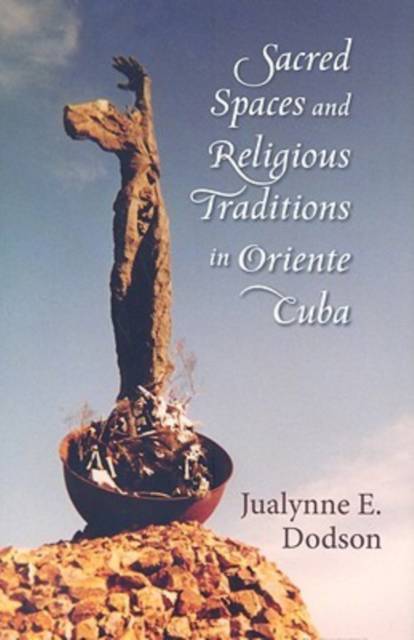
- Retrait gratuit dans votre magasin Club
- 7.000.000 titres dans notre catalogue
- Payer en toute sécurité
- Toujours un magasin près de chez vous
- Retrait gratuit dans votre magasin Club
- 7.000.0000 titres dans notre catalogue
- Payer en toute sécurité
- Toujours un magasin près de chez vous
Description
Spaces set apart by religious practitioners to represent their understanding of the sacredness of their world provide useful windows into the collective history and the expression of ideas of a religion and its followers. Jualynne Dodson explores sacred spaces constructed between 1998 and 2007 by contemporary practitioners of four popular religions in Cuba's eastern Oriente region. Three of these religions, Palo Mayombé, Vodú, and Muertera Bembé de Sao, are Africa-based traditions while the fourth, Espiritismo, is indigenous to Cuba and Oriente, though it evolved from traditions of the U.S. and Europe. While the religions vary in historical development, in material artifact, and ritual activities that comprise their content, images in this book reflect inherited and shared cosmic orientation of the traditions.
The investigation of Dodson and the African Atlantic Research team offers an interconnected examination of the history and embedded understandings of these four religions while simultaneously offering a panoramic view of religious development in Cuba and practitioners' struggle for a self-defined, Africa-based nature for their religious activities on the island.
Spécifications
Parties prenantes
- Auteur(s) :
- Editeur:
Contenu
- Nombre de pages :
- 216
- Langue:
- Anglais
- Collection :
Caractéristiques
- EAN:
- 9780826343536
- Date de parution :
- 16-10-08
- Format:
- Livre relié
- Format numérique:
- Genaaid
- Dimensions :
- 161 mm x 230 mm
- Poids :
- 508 g

Les avis
Nous publions uniquement les avis qui respectent les conditions requises. Consultez nos conditions pour les avis.






